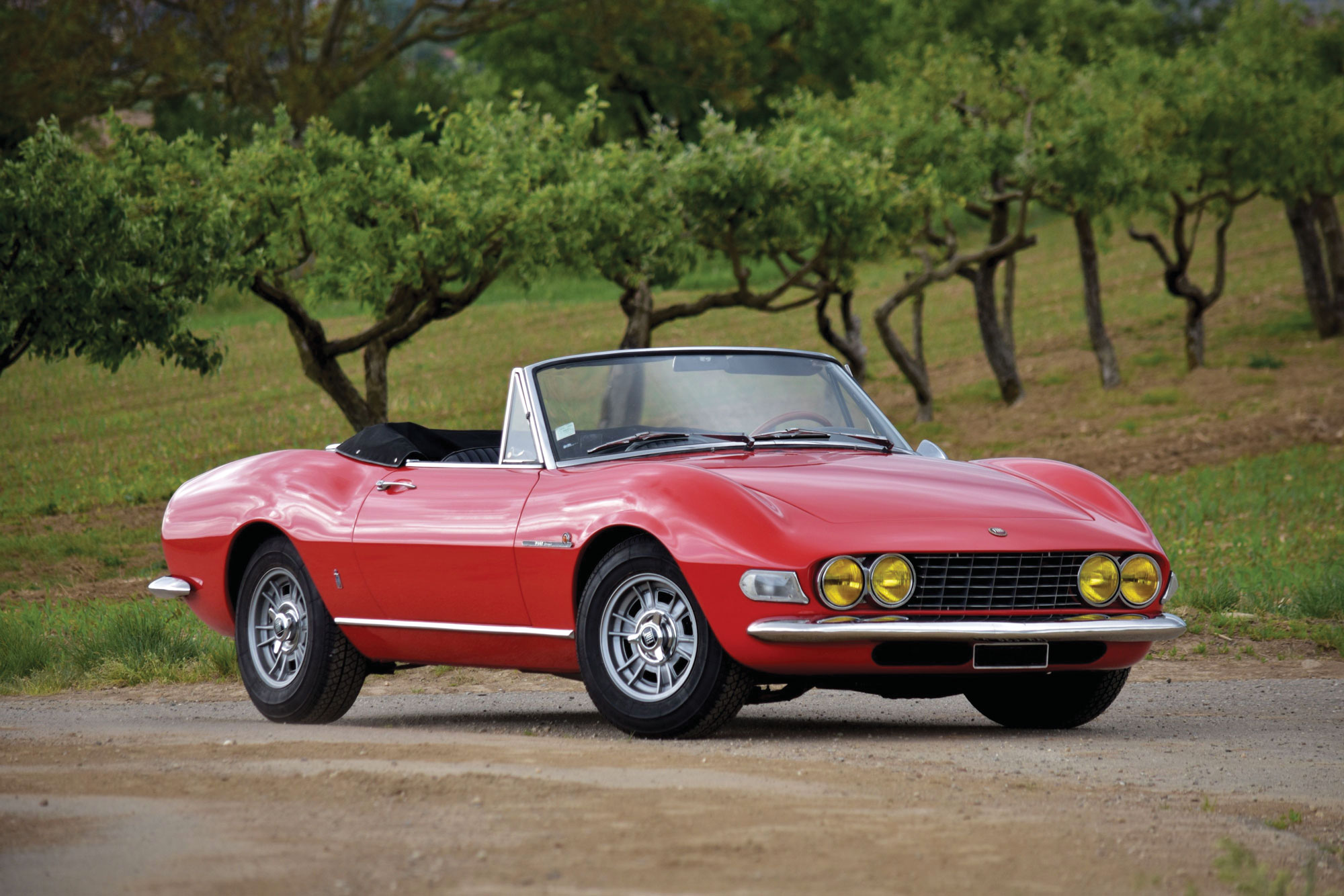SCM Analysis
Detailing
| Vehicle: | 1968 Fiat Dino Spider |
| Years Produced: | 1966–69 |
| Number Produced: | 1,163 |
| SCM Valuation: | $121,000 |
| Tune Up Cost: | $2,500 |
| Chassis Number Location: | Engine compartment, stamped on right side, on firewall; plate riveted on the front right wheelarch |
| Engine Number Location: | Stamped on the rear passenger’s side of the engine block, ahead of water-pump housing just under the distributor |
| Club Info: | Fiat Club America |
| Website: | http://www.fiatclubamerica.com |
| Alternatives: | 1967–68 Porsche 911 S Targa, 1967–69 Alfa Romeo 1750 Spider Veloce, 1968–71 Mercedes-Benz 280SL |
| Investment Grade: | B |
This car, Lot 218, sold for $118,053 (€113,240), including buyer’s premium, at the Artcurial Le Mans Classic auction on July 2, 2022.
The Fiat Dino Spider was styled by Carrozzeria Pininfarina’s Filippo Sapino, with a gorgeous and perfectly understated design that belies what lies beneath the hood. That would be the extraordinary all-alloy Tipo 135B V6. This engine, co-developed by Fiat and Ferrari, would become best known as the powerplant in the mid-engine Ferrari Dino.
A Ferrari in Fiat clothing
A 65-degree V6 displacing 2.0 liters (later increased to 2.4 liters with a new iron block), it used four chain-driven overhead cams and had a compression ratio of 9.0:1. With three double-barrel Weber carburetors, it produced 160 horsepower at 7,500 rpm and it sounded magnificent — just like a Ferrari.
If you ever wondered how much value can be attributed to the Ferrari mystique, just look at the difference in price between a Fiat Dino Spider and a Ferrari Dino. The latter are currently trading in the half-a-million-dollar range. Never mind that the Ferrari is actually a targa, while the Fiat version is a true convertible 2-seater, which should make it more valuable, no?
Fiat employed a conventional front-engine, rear-drive layout for its Dino. If there is a criticism to be levied, it is in the use of a rear suspension with a rigid axle and leaf springs. This was adapted from the Fiat 2300 but discarded with the introduction of the successor-model Dino 2400, which had independent rear suspension. Yet with large disc brakes on both front and rear and a limited-slip differential, the original Dino Spider still had spectacular road manners.
In-period the Dino Spider had few similar competitors. Only Porsche’s 2-liter 911 Targa S had similar power, while other sports-car competitors either came up short or had to use much larger engines. It is truly one of the most amazing sports cars of its era.
What goes wrong
The Fiat interior is in no way luxurious, but it looks fine enough for a 1960s sports car. The vinyl covering the seats is robust and it ages well. In the worst scenario, it can be easily replaced. Not so with the body, which shouldn’t come as a surprise, as this is still a Fiat.
So of course, rust is the biggest enemy of these cars. As the Dino Spider is a unibody car with no roof, the floor is the most important structural part. They can rot from underneath, or, in the case of neglected leaks from the soft top, from the top down. The combination of the two can be lethal, and many cars have been lost in this way. Restoration is not easy, as body panels are scarce and expensive, as are many other parts, including bumpers.
The engine deserves the care of an expert specialist. It needs to be tuned up and maintained just as if it were in a Ferrari. It also needs proper love and maintenance from its owner, as it should not be revved when cold. Particular attention should be paid to regular coolant changes. As for the electrics, the Magneti Marelli DigiPlex ignition module is quite reliable and suffers only in a damp environment, which is best avoided for reasons already explained.
Buy the best one
With the extensive mechanical and cosmetic refurbishment and restoration detailed in the catalog, our subject car seems like a nice example. It does have some minor issues, including the badges on its front fenders from the 2400, rather than the correct ones, which incorporate the Pininfarina logo. But all the expensive work is already done, which is important with Fiat Dinos. You really do not want a project, as low values led to many cars being subjected to deferred maintenance and borderline neglect.
In the early 2000s, Dino Spiders were trading in the mid to upper five figures, then they jumped up to the $100k–$150k range in the middle of the last decade. Since then, the market has stalled. This sale, right in the middle of that range, still seems like a good buy. For an average-car amount of money, the new owner brought home a good one.
With just 1,163 produced, Dino Spiders are rare and desirable cars regardless of their pedestrian Fiat badges. Even though they are not Ferraris, sharing an engine with one certainly doesn’t hurt. The Dino Spider’s sheer beauty should make it appealing even to a younger crowd, ensuring a bright future. ♦
(Introductory description courtesy of Artcurial Motorcars.)




